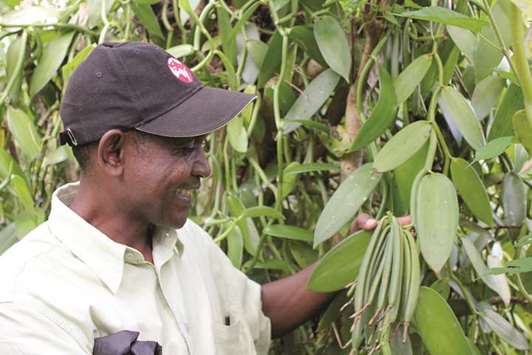Georges Geeraerts has bad news for the vanilla lovers of this world. Although the harvest on Madagascar is in full swing, it will soon be over, according to the head of the east African island’s vanilla exporters association.
“Prices will be even higher than last year,” he says.
They’ve already been going up since 2014, and vanilla is now one of the most expensive spices in the world, second only to saffron.
Madagascar supplies 80 per cent of the world’s demand, but earlier this year a storm wrought extensive damage to the island’s crop.
Vanilla is used in all kinds of products, from ice cream, cakes, biscuits, yoghurts and chocolate to perfume, moisturisers, shampoos and soaps. Thanks to the poor conditions in recent months, consumers all over the world may start having to pay more as product makers pass on the costs.
Bourbon vanilla, which only Madagascar, Reunion Island and the Comoro Islands may claim to produce, will become even more expensive.
Besides the weather, Madagascar also faces other difficulties. “The biggest problem is that the raw vanilla is often harvested too early. Farmers are afraid of thieves and so begin picking it from March, even though it’s not ready till June,” says Rado Andrianantenaina, a producer and exporter from Antalaha in the north east of Madagascar.
The boss of Maison de Sava, a producer and exporter of vanilla, says prices are likely to remain high.
“Prices are likely to be more or less the same as last year, between 400 and 600 dollars a kilo,” he says, adding: “That won’t stop customers from buying vanilla: last year between 1,800 and 2,000 tonnes of vanilla were exported.”
But German perfume and flavouring company Symrise, one of around two dozen western businesses which have a local presence in Madagascar, believes there will be enough of a crop for its customers. “There’s enough of a suitable quality to meet our demands,” says Symrise boss Heinrich Schaper.
The company works with around 700 vanilla farmers on Madagascar and processes around 10 per cent of the island’s crop. It also works on development programmes with various aid agencies.
Schaper says his company is the only one which extracts vanilla locally before exporting it in liquid concentrated form around the world. He notes that the increase in prices is also being driven by an increase in demand. “The trend for authenticity, for real [vanilla] is growing, especially in the United States and Asia, but Europe too,” he says.
The profits are encouraging growers in other countries to give vanilla farming a try – India and Uganda, for example.
“With these kinds of prices, other countries might start vanilla farming so that prices begin to fall,” says Geeraerts.
But, he says, their efforts will literally take a while to bear fruit, since it takes four years for a new vanilla plant to begin producing beans. - DPA

A farmer shows off some green vanilla pods in Madagascar, which produces 80 per cent of the world’s vanilla.
